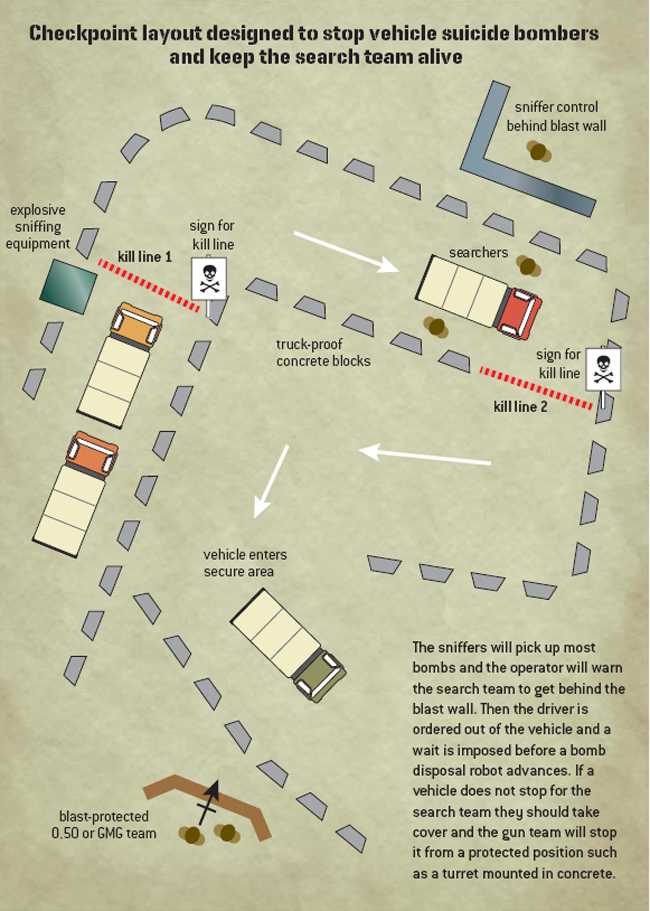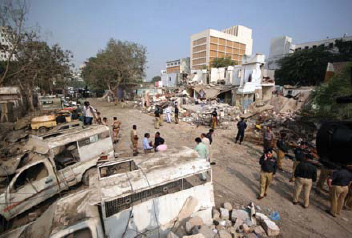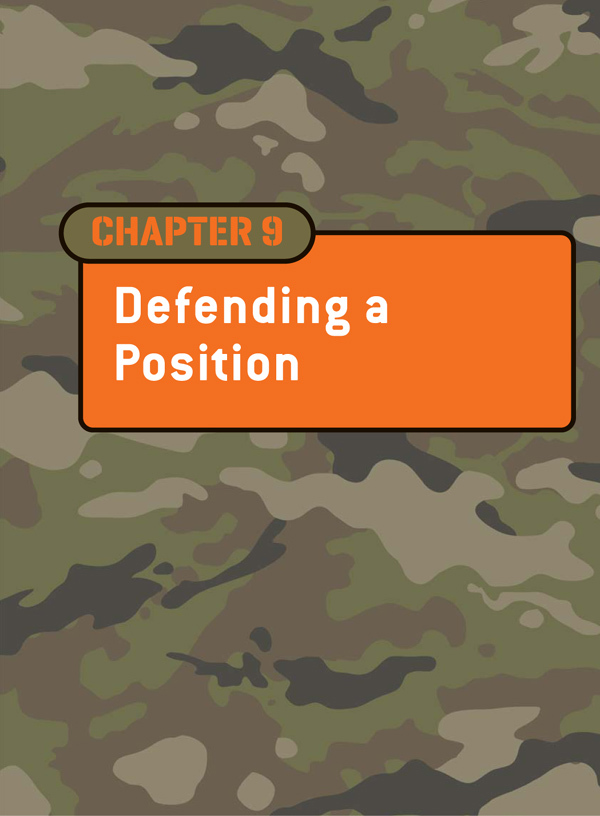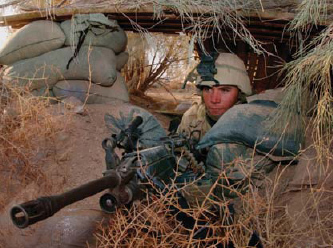REMEMBER:
Suicide bombers can be prevented from detonating their bombs in any chosen area given the political will to restrict freedoms and the military resources to do the searching. Normally the areas where these tactics can be applied must be restricted to relatively high value targets such as aircraft facilities, government buildings and military posts. Do your job well and you’ll stay alive and limit the potential damage. But there will be nothing you can do to prevent attacks on unguarded civilian targets – this is out of your hands.
Fortunately, the chances of this happening are fairly remote as there is a large investment by the terrorists in a truck bomb both in terms of planning and logistics including supplying the explosive. If it does happen, try a head shot at the driver, it might just stop him pressing the button – what have you got to lose?


When effective searches are either not implemented or followed through... The aftermath of a massive explosion which killed at least 18 people including children and security officials and injured more than 100 others in Karachi, Pakistan, on 11 November 2010. (Corbis)
What is much more likely to happen is that a vehicle will be driven at a position or building you are guarding. What are you going to do then? By the time it happens it is too late to think about it. Defence against motorized bombs is all in the planning. So far as is possible, given the fact you may be in a town, prevent vehicles from approaching within blast radius of the target by placing large concrete blocks or pillars sunk deep in the ground. These should be sufficient to stop a heavy vehicle approaching at speed and create a perimeter all around the target – not just where the entrance points are.
At the point of entry force vehicles to slow right down on their approach by placing further large concrete blocks or similar. These should be set up in such a way that the vehicles not only have to slow down but they have to manoeuvre through ‘S’ bends at least twice after being stopped by the search crew. By this means, a vehicle is stopped and searched outside the perimeter where it cannot do severe damage to the target or most of the guards.
The search crew should always be covered by fire from a position within the perimeter. By this means, if the search crew are shot, or their commands to stop are ignored, the vehicle can be brought under sustained and accurate fire. Even if the vehicle cannot be stopped immediately the driver can be killed and the ‘S’ bend will stop the vehicle’s closer approach.
As with walking bomb checks it is reasonable to draw for, and rotate, the job of search crew.

INTRODUCING THE IDEA OF DEFENCE
In this section we are going to look at how you keep yourself and your mates alive when you are attacked and the enemy are doing their best to kill you. As we have already seen, a lot of defence comes down to digging a hole and sitting in the bottom of it – not very glamorous but comforting when the two-way range is getting busy.
First of all we will take a look at classical defence; how you pick a place to defend, how you design the defences and how you man them. This will give you a clear idea of the principles involved in a prepared defence so you can then go on to design your own as the circumstances require.
Then we have what we might call the unprepared defence. Situations where you are not specifically dug in and ready for the enemy but, being a good soldier, you always have it in the back of your mind that you may be hit at any time and have your SOPs ready. This covers defending yourself on a foot patrol or convoy against ambush. Then finally we look at manning checkpoints and the bane of every private soldier’s life – sentry duty – where you are in a permanent condition of defending a particular target.
Its all pretty straightforward stuff but if you get it right you will stay alive and if you get it wrong you may not – so make your decision carefully regarding learning this part. Listen to the news and think how many of the casualties you hear of would still be drinking beer in the mess if they had done it right. As I’m finishing this section I have just heard the news from Afghanistan. A bunch of guys were caught in the accommodation area of their base by a couple of mortar shells. Some were hurt badly and one died because they didn’t have a hole to jump into. If they had been operating correctly they would still be on their feet.

A British Parachute Regiment patrol comes under threat and assumes an all-round defensive position. Notice there is a sniper with the patrol. (Photo courtesy Tom Blakey)

US Marine Corps base near Kandahar in 2001. Solid walls, strong roof, blinds behind to stop silhouette. Good effort. (Topfoto)
Defining the threat
Wherever you are and whatever you are doing when attacked, the first thing you need to think about is what the enemy is trying to achieve. Yes, I know you are thinking ‘That Bastard is trying to kill me,’ but actually the reality is a little more complicated than that.
Many, indeed most, direct attacks by insurgents are not aimed at overwhelming your defences and killing you all. They are harassing attacks designed to make life unpleasant for you. But, of course, there is always the potential for a ‘proper’ attack where the opposition are out to slaughter every man Jack of you.
As a general rule, if you are in a prepared position, the insurgent attackers are out to make your life miserable because you are too strong to assault. But if you are on patrol and ambushed or in a tiny, remote position with no back up, you need to work out if the opposition is just harassing you or out to kill every single man in the team.
You need to assess which type of attack is coming in because what the enemy is trying to achieve will tell you a lot about how many of them there may be, what their plans are and what may come next. This Intel is always useful in a contact situation as it guides your response.
So how do you know what they are doing? Let’s take a look at the two types of attack and what they are seeking to achieve.
Harassing attack
As a rule, a hit-and-run harassing attack is the tactic employed by a force which does not have sufficient troops or weapons at its disposal to mount a more effective attack – an attack capable of causing more casualties or capturing the ground. The harassing attack may be mounted against a huge encampment by one or two men with a single mortar tube or a sniping rifle. And they have a good chance of getting away if you are not properly organized. We will see about that shortly.
The most common form the harassing attack takes is the occasional mortar round fired in the general direction of your base but intensity of fire can be high and weapons employed may include rocket launchers and small arms in the indirect fire role – i.e. fired in the air to drop on you.
The purposes of the harassing attack include: